26. October 2020 - 11:24
The great Russian author Feodor Dostoevsky found in St. Ambrose of Optina not only inspiration for the character of Elder Zosima in Brothers Karamazov—he also acquired peace and repentance in the famous elder’s tiny monastic cell. The following is an overview of Feodor Mikhailovich’s relationship to Elder Ambrose of Optina, who is celebrated today.
How close did Dostoevsky’s Zosima come to Ambrose of Optina? What did the famous author take away from his memorable meeting with St. Ambrose? The well-known Dostoevsky scholar Professor Sergei Vladimirovich Belov (June 23, 1936–November 7, 2019) discusses St. Ambrose as one of the important personages in Feodor Dostoevsky’s life in this chapter from his two-volume encyclopedia entitled, F. M. Dostoevsky and His Circles.1
The writer’s wife, A. G. Dostoevskaya, recalls: “On 16 May 1878, our family was stricken with a terrible misfortune—our youngest son Lyosha [diminutive of Alexei] died <…>. In order to soothe Feodor Mikhailovich at least a little and distract him from his sad thoughts, I asked Vl[adimir]. S. Soloviev, who visited us during those days of our sorrow, to persuade Feodor Mikhailovich to go with him to Optina Hermitage, where Soloviev was planning to go that summer. It was Feodor Mikhailovich’s longtime dream to visit Optina Hermitage….”
23. October 2020 - 11:41
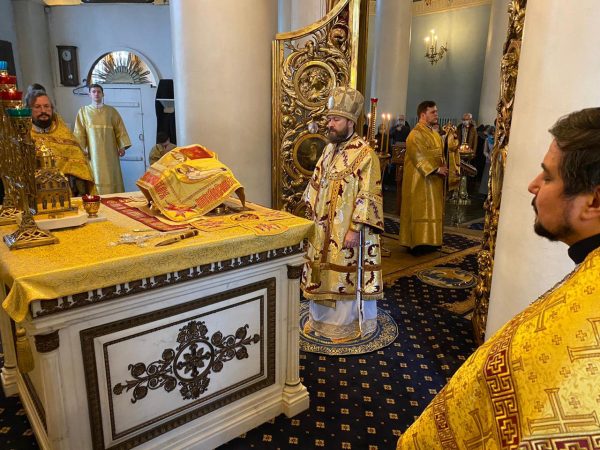 On October 18, 2020, the 19th Sunday after Pentecost, the feast day of the Synaxis of Moscow Saints, Metropolitan Hilarion, Chairman of the Department for External Church Relations of the Moscow Patriarchate, officiated a Divine Liturgy at the Church of Joy Of All Who Sorrow Icon of the Mother of God in Moscow, reports the website of the DECR. At the end of the liturgy, the archpastor delivered a sermon:
On October 18, 2020, the 19th Sunday after Pentecost, the feast day of the Synaxis of Moscow Saints, Metropolitan Hilarion, Chairman of the Department for External Church Relations of the Moscow Patriarchate, officiated a Divine Liturgy at the Church of Joy Of All Who Sorrow Icon of the Mother of God in Moscow, reports the website of the DECR. At the end of the liturgy, the archpastor delivered a sermon:
“In the Name of the Father, and of the Son, and of the Holy Spirit!
I congratulate all of you, dear fathers, brothers, and sisters, on this Sunday.
14. October 2020 - 10:40
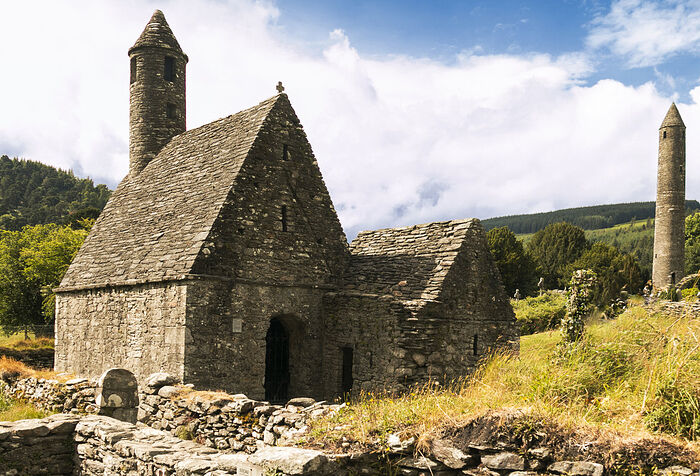 As in the previous century, one of the main centers of Christianity and culture in Western Europe in the eighth century was Ireland with its relatively small population, which numbered around 250,000 at most.
As in the previous century, one of the main centers of Christianity and culture in Western Europe in the eighth century was Ireland with its relatively small population, which numbered around 250,000 at most.
Irish monks enjoyed indisputable authority among the people. One of its characteristic examples was the declaration of the “laws of the saints”, which were instituted in monasteries and then adopted by the rulers of the numerous kingdoms Ireland was divided into. The first such law was introduced in 697 by St. Adomnan, Abbot of Iona, and became known as “the Law of Adomnan” (“Cain Adomnain”), or “the Law of the Innocents.” It prohibited the killing of women, clerics and children who did not take part in warfare (that is, noncombatants, to put it in modern terms) and perpetrators were exposed to substantial fines. In 734, “St. Patrick’s Law” was enacted, and in 788 “St. Ciaran’s Law” was proclaimed.
1. September 2020 - 13:11
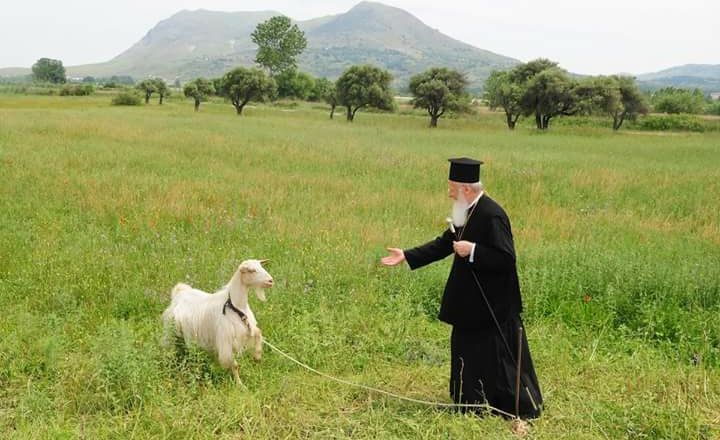 In his message at the beginning of the new church year, Ecumenical Patriarch Bartholomew states that “respect for the environment is an act of doxology of God’s name, while the destruction of creation is an offense against the Creator, entirely irreconcilable with the basic tenets of Christian theology.”
In his message at the beginning of the new church year, Ecumenical Patriarch Bartholomew states that “respect for the environment is an act of doxology of God’s name, while the destruction of creation is an offense against the Creator, entirely irreconcilable with the basic tenets of Christian theology.”
At the initiative of the Patriarchate of Constantinople, September 1 was set aside as a day of prayer for the protection of creation.
27. August 2020 - 15:02
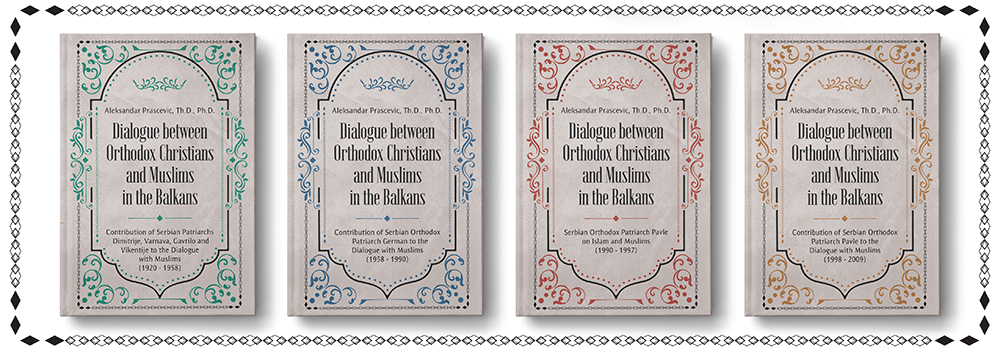 Four books on the contribution of the Serbian Orthodox Church to the dialogue with Muslims
Four books on the contribution of the Serbian Orthodox Church to the dialogue with Muslims
The Publishing Foundation of the Archdiocese of Belgrade-Karlovci of the Serbian Orthodox Church has published four scientific monographs in English authored by Deacon Dr. Aleksandar Prascevic on the topic of Dialogue between Orthodox Christians and Muslims in the Balkans, which represent an exhaustive and comprehensive history of the contribution of patriarchs, bishops, priests and monks of the Serbian Orthodox Church to the dialogue with leaders and representatives of Islamic communities in the period from 1920 to 2009.

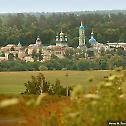

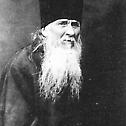
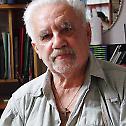





 On October 18, 2020, the 19th Sunday after Pentecost, the feast day of the Synaxis of Moscow Saints, Metropolitan Hilarion, Chairman of the Department for External Church Relations of the Moscow Patriarchate, officiated a Divine Liturgy at the Church of Joy Of All Who Sorrow Icon of the Mother of God in Moscow, reports the website of the DECR. At the end of the liturgy, the archpastor delivered a sermon:
On October 18, 2020, the 19th Sunday after Pentecost, the feast day of the Synaxis of Moscow Saints, Metropolitan Hilarion, Chairman of the Department for External Church Relations of the Moscow Patriarchate, officiated a Divine Liturgy at the Church of Joy Of All Who Sorrow Icon of the Mother of God in Moscow, reports the website of the DECR. At the end of the liturgy, the archpastor delivered a sermon: As in the previous century, one of the main centers of Christianity and culture in Western Europe in the eighth century was Ireland with its relatively small population, which numbered around 250,000 at most.
As in the previous century, one of the main centers of Christianity and culture in Western Europe in the eighth century was Ireland with its relatively small population, which numbered around 250,000 at most. In his message at the beginning of the new church year, Ecumenical Patriarch Bartholomew states that “respect for the environment is an act of doxology of God’s name, while the destruction of creation is an offense against the Creator, entirely irreconcilable with the basic tenets of Christian theology.”
In his message at the beginning of the new church year, Ecumenical Patriarch Bartholomew states that “respect for the environment is an act of doxology of God’s name, while the destruction of creation is an offense against the Creator, entirely irreconcilable with the basic tenets of Christian theology.”
